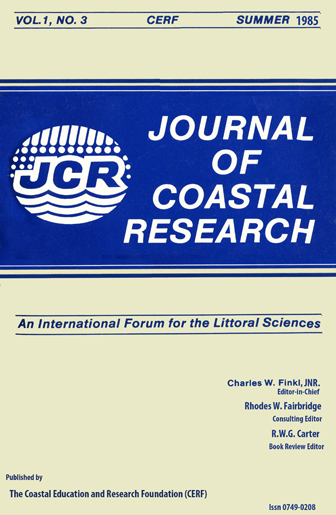Quaternary Sea-Level Fluctuations on the Northwestern Shelf of the Japan Sea
Keywords:
Abrasion platform, drowned/submerged shoreline, Dzeman terrace, Flandrian transgression, Kazantservo transgression, Peat-Igarlsan cold episode, raised shoreline, Spokoynaya BayAbstract
Paleogeographic reconstructions for the northwestern margin of the Japan Sea suggest that the 2 to 4-meter fall of sea level below present datum coincides with cold transitions between the Atlantic -Subboreal and Subboreal-Subatlantic episodes. Quaternary oscillations of the Japan Sea, which were glacio-eustatic in nature, resulted in the formation of lower marine and lagoonal terraces that were separated from one another by well-defined erosional features. Late Pleistocene Holocene transgressions had greater impact on the geomorphic and sedimentary framework than did tectonic processes which occurred throughout these glacio-eustatic oscillations. The lack of marine terraces above the highest levels of the Quaternary transgressions (8 to 10 m above MSL) indicates a relatively stable or slowly subsiding northwestern shelf of the Japan Sea during the Pleistocene. Geological, geophysical, geomorphological, and absolute dating of marine deposits permitted division of a well -known marine bench previously believed to have resulted from the Riss-Wurm (Kazantsevo) transgression. This nearly equidimensional bench level is now recognized as two separate terraces, each corresponding to a Riss-Wurm transgression.


